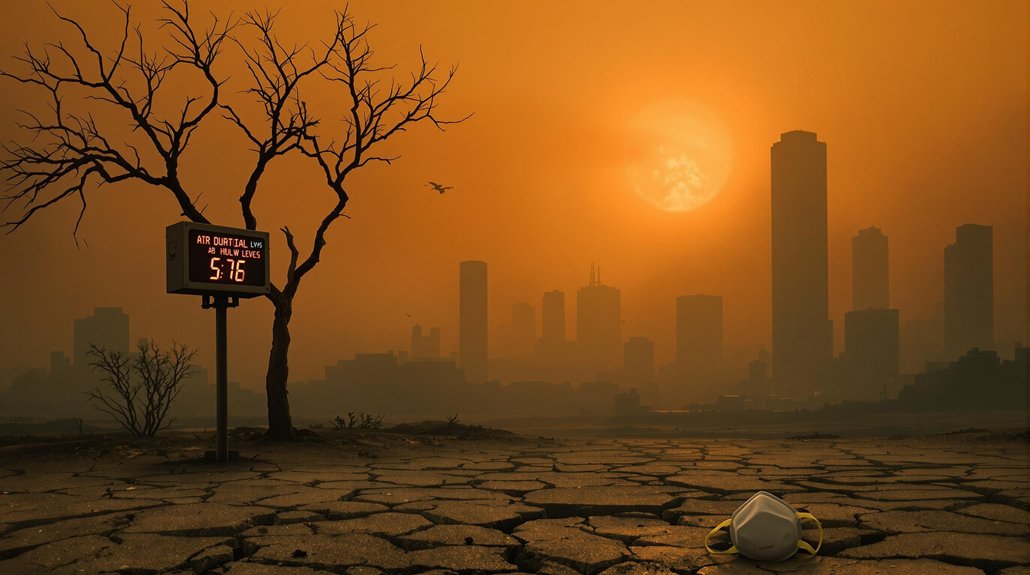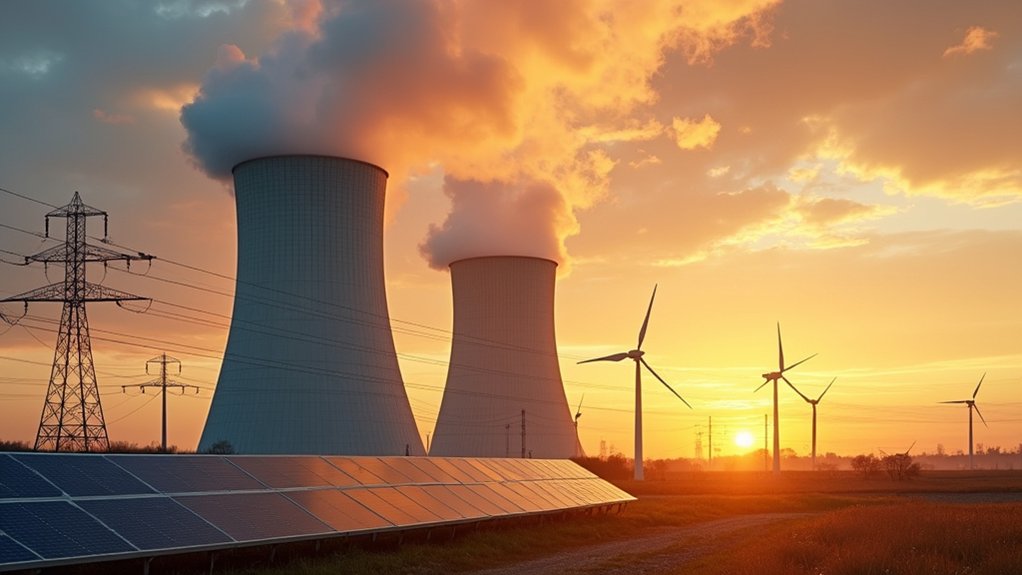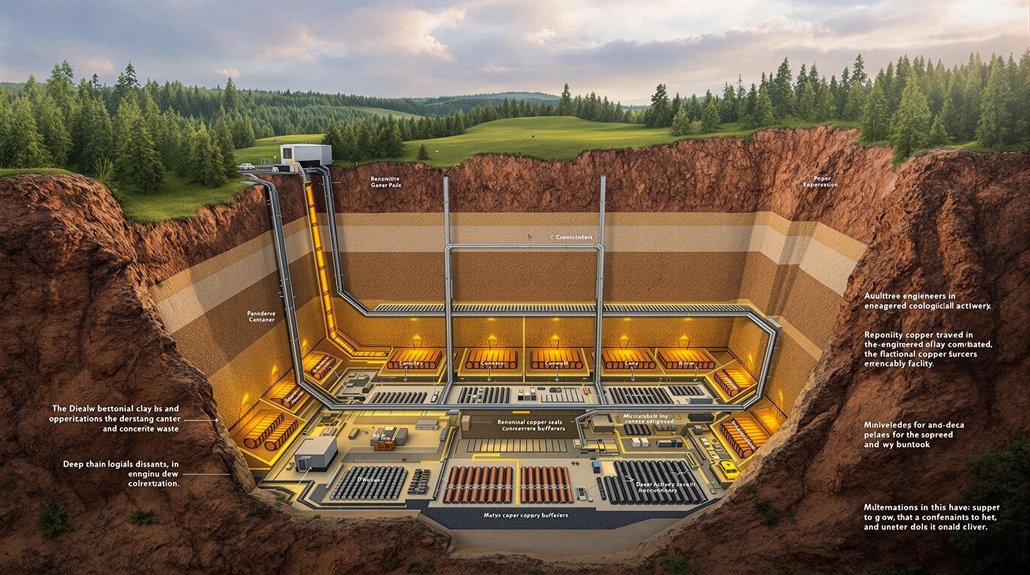Nuclear boasts superior safety records and efficiency, causing 99.7% fewer deaths than oil. It needs way less land too. Meanwhile, solar and wind offer plummeting costs – now five times cheaper than nuclear. Yeah, renewables struggle with intermittency, but economics speaks volumes. One nuclear reactor equals 800 wind turbines in output, but investors follow the money. The energy throne might be changing hands for reasons beyond what meets the eye.
As debates about clean energy solutions intensify, the competition between solar and wind versus nuclear power has never been more relevant. Each option comes with its own baggage. Nuclear’s got the scary reputation, but the numbers tell a different story – causing 99.7% fewer deaths than oil and 97.6% fewer than natural gas. Not too shabby for the energy source everyone loves to fear.
Let’s talk efficiency. Nuclear plants hum along at a 93% capacity factor while wind struggles at 36% and solar manages a measly 24%. Translation? You’d need about 800 wind turbines to match one nuclear reactor. Yeah, that many.
Nuclear delivers while renewables play hide-and-seek with nature. One reactor equals 800 windmills – that’s efficiency in action.
The economics get interesting. Solar and wind costs keep dropping – like 10-12% every year. Meanwhile, nuclear construction costs are climbing faster than a squirrel on an unattended bird feeder. The levelized cost for solar and wind is now about five times cheaper than nuclear. Money talks, folks.
But wait – land use is where nuclear shines. It needs 1/2000th the land area of wind and 1/400th of solar. That’s compact! Those pretty wind farms? Ecological disruptors. They kill birds and bats. Solar panels? They create 300 times more toxic waste per unit of electricity than nuclear. Oh, and manufacturing them involves some nasty chemicals.
The intermittency problem haunts renewables like a bad hangover. No sun, no wind, no power. Nuclear just keeps going, rain or shine, day or night. Sure, you could overbuild wind and solar capacity, add batteries – if you’ve got cash to burn.
Both sides are innovating. Advanced nuclear designs are in development while solar and wind efficiencies keep improving. Energy storage breakthroughs could change everything for renewables. Nuclear waste stays radioactive for thousands of years, but maybe fusion will save the day. Despite advancements, weather changes significantly impact the reliability and output of renewable energy systems.
When it comes to carbon footprints, research shows nuclear, wind, and solar all produce similarly minimal lifecycle emissions of just 4-6 gCO2e/kWh, dramatically lower than fossil fuels with carbon capture. According to IPCC data, solar farms actually produce four times more carbon pollution than nuclear plants.
The perfect energy source doesn’t exist. Not yet anyway. Each option forces tough trade-offs between economics, reliability, and environmental impact.








